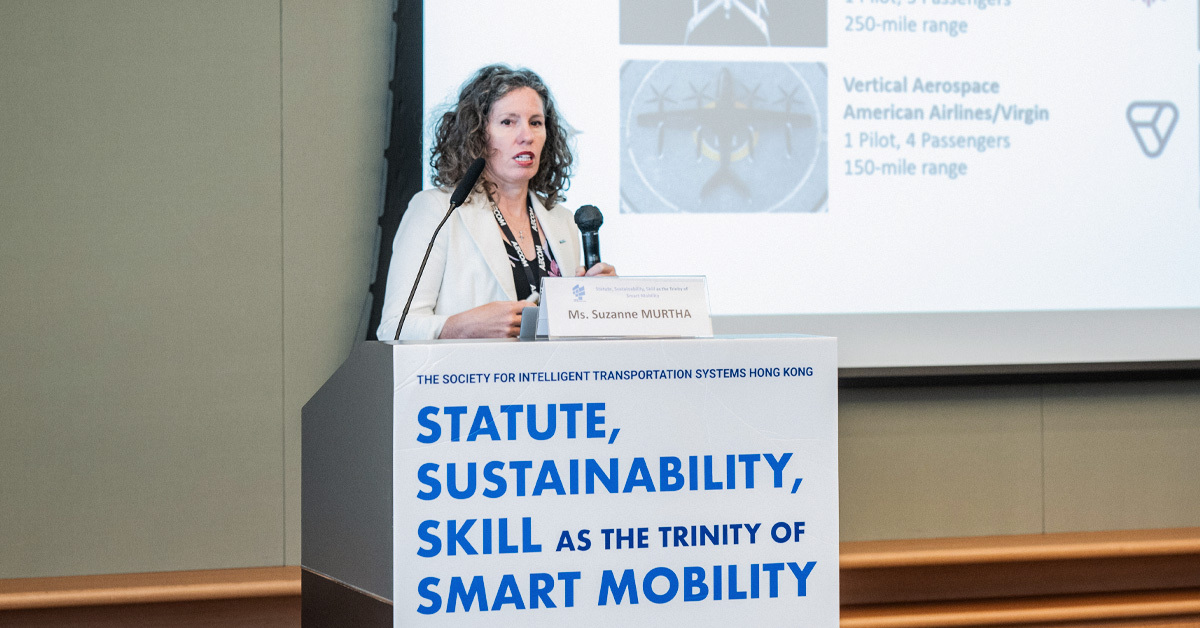Creating business in the air

Seize the chance
Hong Kong's location within the 11-city GBA, along with its strengths in financing capacity, application scenarios, scientific research capabilities, and professional cultivation, demand early development and deployment of the low-altitude economy, says Tan, who is also chairman of BOCOM International Holdings Co Ltd.
Chief Executive John Lee Ka-chiu, in his 2023 Policy Address, stressed Hong Kong's goal to become a global innovation and technology hub and promote the development of 5G technology.
Beijing-based e-commerce giant Meituan has become the mainland's biggest operator of commercial delivery drones. "The low-altitude economy, primarily driven by the application of drones, is a perfect intersection of these two strategies," says a spokesperson for Meituan Unmanned Aircraft System, which manages the group's drone food delivery business. "The research, development, and manufacturing of drone systems have utilized a significant amount of technology, such as artificial intelligence, big data, the internet of things, and new materials."
The low-altitude economy industry chain is highly extendable, capable of setting up research centers and attracting scientific and technological professionals. It can create new consumer scenarios, and corresponding infrastructure construction can stimulate effective investment and promote the transformation of airspace from a natural to an economic resource.
Suzanne Murtha, vice-president of advanced mobility, payment systems, and automation at American infrastructure consulting firm AECOM, says cultivating a low-altitude economy can enhance interconnectivity within the GBA and support the growth of economic activities in Hong Kong.
"Low-altitude economy applications, such as aerial tourism, will allow greater access across the city and contribute to the growth of that market," she says. "The use of aerial taxis will shorten travel time and alleviate road traffic, improving overall safety. This will result in reduced costs associated with traffic congestion, accidents, and lengthy time for travel." By doing so, it will help to improve connectivity among cities and outlying islands and rural areas in Hong Kong and, more importantly, allow closer connections between the downtown areas and the Northern Metropolis.

The Northern Metropolis, announced in the government's 2021 Policy Address, is adjacent to Hong Kong's boundary with the mainland and occupies a total land area of about 300 square kilometers. With innovation and technology as a growth pillar, the SAR government aims to make the project, which is expected to take 20 years to complete, a new development engine for the city and alleviate the chronic housing shortage.
However, there are still some policy limitations due to the multidepartmental management relating to the low-altitude economy's development and the operational deployment of drones.
Meituan says the permits currently issued by Hong Kong's Civil Aviation Department do not cover the Beyond Visual Line of Sight operations, which refers to the operation of unmanned aerial vehicles at distances where the operator is unable to observe the aircraft with the naked eye. Thus, the restriction hinders routine commercial implementation of drone delivery services.
As a result, it is recommended that an interdepartmental leadership team be formed to collaborate with the academic and industrial sectors to jointly develop the low-altitude economy.
Murtha notes that resistance from district councilors, developers, landowners and citizens may be encountered regarding electric vertical takeoff and landing aircraft, and drones flying over them, given safety and privacy concerns. It will also take more time to see growth in demand for low-altitude economy applications.
There is also a challenge in infrastructure development as landing site locations for electric vertical takeoff and landing (eVTOL)aircraft have to be carefully considered in terms of convenience, inter-modal connections, and environmental issues, such as noise pollution and their effects on birds, says Murtha. Like electric vehicles, charging eVTOLs requires a significant amount of power, and vertiport locations may need upgraded power infrastructure.
To help Hong Kong realize its ambitions, Tan believes a platform for investment and financing matchmaking for low-altitude economy-related industries should be established. By optimizing support and the environment for startups offered by venture capital, commercial and investment banks, and the Hong Kong Stock Exchange, it could attract companies in the low-altitude economy industry chain to seek investment, financing or secondary listings in the SAR.
- Suspect jumps to death after fatal Taipei attack
- Macao thrives as collaboration deepens
- Beijing reiterates strong opposition to US arms sales to Taiwan
- Attack in Taipei injures 9, including 4 in critical condition: local media
- Ministry to launch month-long program aimed at promoting youth employment
- National health body asks consumers to read nutritional information on food labels




































